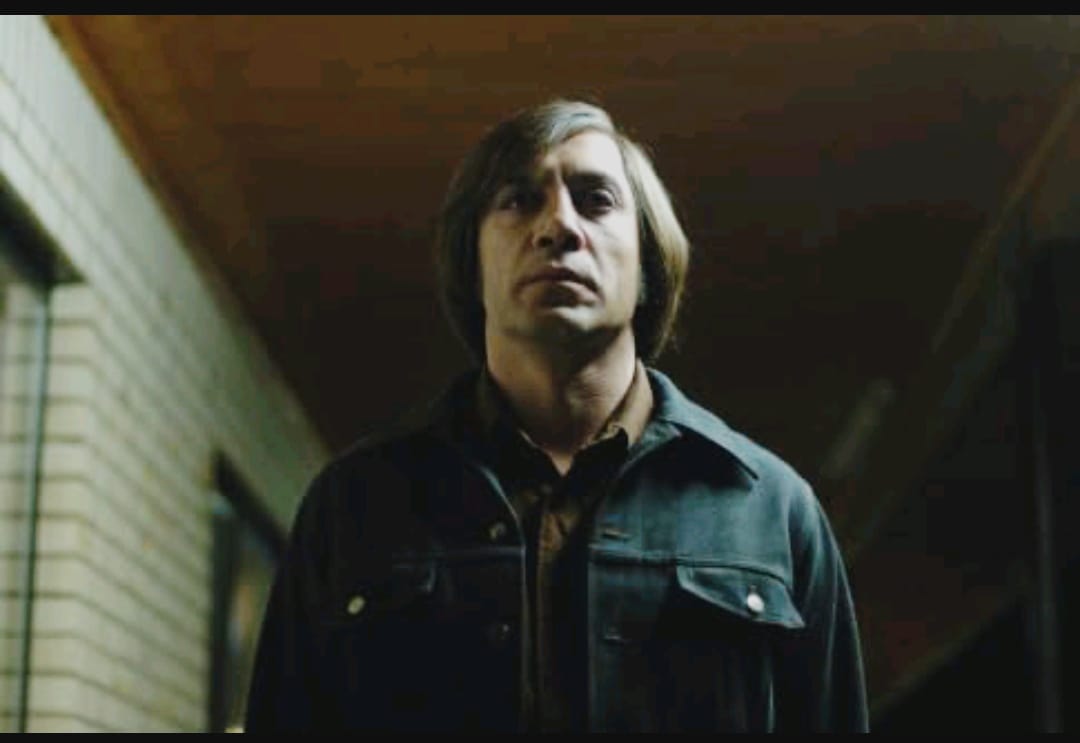India & World UpdatesHappeningsBreaking NewsFeature Story
Javier Bardem’s stellar performance in No Country for Old Men, writes Shanku Sharma

//Shanku Sharma//
Javier Bardem’s portrayal of Anton Chigurh in the Coen brothers’ film No Country for Old Men (2007) stands as one of the most iconic villain performances in cinematic history.
Bardem’s transformation into Chigurh began with his physical appearance. The character’s distinctive hairstyle, an anachronistic pageboy cut, immediately sets him apart and creates a sense of unease. This odd choice, combined with Bardem’s imposing frame, gives Chigurh an almost otherworldly presence. His cold, unblinking stare and deliberate movements contribute to a sense of inevitability and doom that follows him throughout the film.
Bardem’s voice work is equally critical to his portrayal. His calm, almost monotone delivery, punctuated by moments of chilling intensity, underscores Chigurh’s unpredictability and detachment from normal human emotions. This detachment is particularly evident in scenes where he engages in seemingly mundane conversations while holding life-or-death power over his interlocutors. The tension in these moments is palpable, as Bardem’s understated performance keeps the audience on edge.
One of the most compelling aspects of Bardem’s performance is the psychological complexity he brings to Chigurh. The character operates by a strict moral code, albeit one that is entirely his own and incomprehensible to others. Bardem conveys Chigurh’s belief in fate and chance, particularly through his use of the coin toss as a tool for deciding his victims’ fates. This randomness makes him even more terrifying, as it strips away any semblance of control or logic from his actions.
Chigurh, as portrayed by Bardem, embodies the film’s themes of fate, inevitability, and the randomness of violence. He is less a traditional villain and more a force of nature, an embodiment of the chaos and brutality that the aging Sheriff Bell (Tommy Lee Jones) feels powerless to combat. Bardem’s performance taps into these themes, presenting Chigurh not as a person but as a symbol of the relentless march of time and the erosion of order and morality.
In this iconic scene at a gas station, Chigurh forces the proprietor to call a coin toss without revealing the stakes until the end. Bardem’s calm demeanor contrasts starkly with the underlying threat of violence, making the scene unbearably tense. His line, “Call it, friendo,” delivered with quiet menace, has become emblematic of the character’s twisted morality.
In his final encounter with Carla Jean Moss (Kelly Macdonald), Bardem’s performance is a masterclass in restrained menace. He offers her the same coin toss, which she refuses, asserting that the choice is his alone. Bardem’s portrayal of Chigurh’s reaction—a mix of frustration and resignation—adds depth to his character, revealing that even he is not entirely devoid of human feeling.
Throughout his pursuit of Moss (Josh Brolin), Bardem conveys a relentless, almost mechanical determination. His interactions with other characters along the way, including the brutal killing of Carson Wells (Woody Harrelson), further illustrate his single-mindedness and the terror he instills in those who cross his path.
Bardem’s performance in “No Country for Old Men” has left an indelible mark on the portrayal of villains in film. He won the Academy Award for Best Supporting Actor for his role, a testament to the power and nuance of his performance. His portrayal of Chigurh has influenced countless other villainous characters, both in terms of psychological depth and the blending of calm exterior with underlying menace.
Javier Bardem’s performance as Anton Chigurh is a masterful blend of physicality, vocal control, and psychological complexity. By embodying the film’s themes and presenting Chigurh as a symbol of inexorable fate, Bardem created a villain who is both terrifyingly human and disturbingly otherworldly. His portrayal remains a high-water mark in the depiction of cinematic evil, resonating with audiences and critics alike long after the film’s release.



